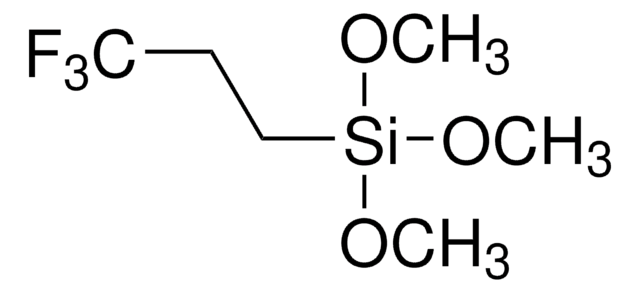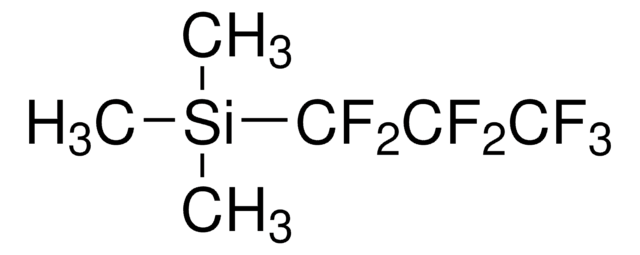Key Documents
658758
1H,1H,2H,2H-Perfluorodecyltriethoxysilane
97%
Synonim(y):
Triethoxy-1H,1H,2H,2H-perfluorodecylsilane
About This Item
Polecane produkty
Poziom jakości
Próba
97%
Postać
liquid
współczynnik refrakcji
n20/D 1.342
tw
209-230 °C
gęstość
1.389 g/mL at 25 °C
ciąg SMILES
CCO[Si](CCC(F)(F)C(F)(F)C(F)(F)C(F)(F)C(F)(F)C(F)(F)C(F)(F)C(F)(F)F)(OCC)OCC
InChI
1S/C16H19F17O3Si/c1-4-34-37(35-5-2,36-6-3)8-7-9(17,18)10(19,20)11(21,22)12(23,24)13(25,26)14(27,28)15(29,30)16(31,32)33/h4-8H2,1-3H3
Klucz InChI
MLXDKRSDUJLNAB-UHFFFAOYSA-N
Szukasz podobnych produktów? Odwiedź Przewodnik dotyczący porównywania produktów
Opis ogólny
Zastosowanie
Hasło ostrzegawcze
Danger
Zwroty wskazujące rodzaj zagrożenia
Zwroty wskazujące środki ostrożności
Klasyfikacja zagrożeń
Acute Tox. 4 Inhalation - Acute Tox. 4 Oral - Carc. 2 - Eye Dam. 1 - Lact. - Repr. 1B - STOT RE 1
Organy docelowe
Liver
Kod klasy składowania
6.1C - Combustible acute toxic Cat.3 / toxic compounds or compounds which causing chronic effects
Klasa zagrożenia wodnego (WGK)
WGK 3
Temperatura zapłonu (°F)
>230.0 °F - closed cup
Temperatura zapłonu (°C)
> 110 °C - closed cup
Środki ochrony indywidualnej
Faceshields, Gloves, Goggles, type ABEK (EN14387) respirator filter
Wybierz jedną z najnowszych wersji:
Masz już ten produkt?
Dokumenty związane z niedawno zakupionymi produktami zostały zamieszczone w Bibliotece dokumentów.
Klienci oglądali również te produkty
Nasz zespół naukowców ma doświadczenie we wszystkich obszarach badań, w tym w naukach przyrodniczych, materiałoznawstwie, syntezie chemicznej, chromatografii, analityce i wielu innych dziedzinach.
Skontaktuj się z zespołem ds. pomocy technicznej















